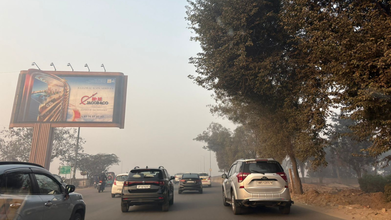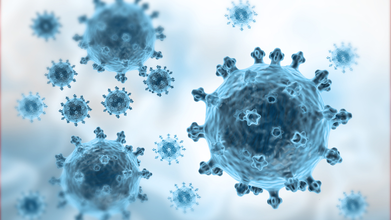- Health Conditions A-Z
- Health & Wellness
- Nutrition
- Fitness
- Health News
- Ayurveda
- Videos
- Medicine A-Z
- Parenting
Happy And Safe Diwali: How Smoke From Firecrackers Puts Children's Vision At Risk

Happy And Safe Diwali: How Smoke From Firecrackers Puts Children's Vision At Risk
Diwali is the time of the year when our nation’s children are on holiday and festivities are rampant. Sadly this fun time for children is also when firecrackers and fireworks are available in plenty. The word “firecrackers” evokes quite a bit of emotion and is often associated with great joy but one must realize that the chemical smoke and gases released from firecrackers can be regarded as a serious concern for the capacity of eyes for children.
It is shocking to know that mothers and fathers have been using firecrackers for this long despite it being scientifically proven to be a pollutant and one that can heavily damage children’s eyesight.
But now, as a parent, most people see things differently—firecracker smoke, while dazzling, risks young eyes and health. From choosing eco-friendly lights and indoor activities, ensuring a festive, safe celebration for your children’s well-being is important and necessary. Dr. Neeraj Sanduja, MBBS, MS - Ophthalmology, Ophthalmologist, Eye Surgeon shares all about the toxic effects of smoke from the firecrackers kids so lovingly enjoy bursting and how harmful they can be for their eyes.
Hazardous Effects of Firecracker Smoke
The smoke from firecrackers is a blend of toxic chemicals and fine particles, each carrying potential harm for the delicate tissues of the eyes. Here are some key pollutants present in firecracker smoke that pose specific dangers:
Particulate matter: These are the fumes exhaled from burning that are extremely small but can infiltrate deep into the lungs and eyes creating lesions and scars.
Sulfur dioxide & nitrogen oxides: These gasses emit acid rain, it's easy to comprehend how detrimental it is to the human body.
Heavy metals: If consumed through the skin lead arsenic or any other toxic metals emitted through firecrackers will inflict great damage.
Common Eye Conditions Linked to Firecracker Pollution in Children
Exposure to firecracker smoke can cause a range of immediate symptoms in children, as well as chronic eye problems that may not become apparent until much later. Children are at high risk of developing some symptoms upon exposure to firecracker smoke, and these include:
Red eye syndrome: Clinical eye examinations show that the eyes can be red and watery, as well as itchy due to the smoke's chemicals.
Eye pain: Another common complaint in children is a burning and stinging sensation in the eye areas.
Intolerance to light: The burning of firecrackers leads to the emission of smoke that can irritate the eyes and increase their sensitivity.
Corneal damage: Severe inflammation of the outer layer of the eyeball caused by exposure to smoke may be a more damaging injury caused than previously mentioned damages of the inner layer.
Long-Term Effects of Firecracker Smoke on Eye Health
While some eye issues may appear right after exposure, others may develop subtly and manifest over time, resulting in chronic eye conditions. Dr Neeraj exclaims, "Of great concern is the fact that parents may not notice these initial signs and the signs that are causes are others since these are only some of the diseases that are dangerous but children who continuously come into contact with air polluted by firecrackers may consider the following risks:
Cataracts
What children may notice is a blurriness or cloudiness that gradually spreads but can eventually distort the image fully.Glaucoma
This is a kink in children that often goes unnoticed, where gradual painless deterioration of almost all things alike about vision can be experienced.Dry eye syndrome
However, one chronic problem that can be observed is when there is extreme inflammation in the ocular surface mucus membranes.Tips for Protecting Children’s Eyes During Diwali
Parents can observe the following measures to shield their children's eyes from the harmful effects of firecracker smoke:
Avoid exposure: In the first place, the best way to avoid damaging children’s eyes is to prevent any contact with firecracker smoke. Encourage children to remain in the house or in well-ventilated areas during a firework display.
Wear protective eyewear: In the event that children have to go outside during a firework display, they should wear protective eyewear such as goggles or sunglasses.
Rinse eyes thoroughly: In case of exposure of firework smoke to the child’s eyes, the affected eyes should be washed with plenty of clean water.
Seek medical attention: If a child suffers from intense pain in the eyes, redness in the eyes or any changes in vision after exposure to cracker smoke, he/she should be taken to a medical facility as soon as possible.
Parental Guidance During Diwali
1. Educate Children on Firecracker Safety
2. Monitor Air Quality Index (AQI)
3. Plan Indoor Activities During Peak Pollution Hours
4. Encourage Healthy Eye Habits (Regular Exams, Hygiene)
Eco-Friendly Alternatives to Firecrackers
1. Eco-Friendly Firecrackers
2. Laser Light Shows
3. Community Events (Parades, Festivals)
4. Indoor Games and Activities
5. Environmentally Conscious Celebrations
Firecrackers undoubtedly liven up the festivities; however, the use of firecrackers and their impact on the health of children has caused a lot of concern, especially their vision. It has become crucial to protect young developing eyes from fire cracker pollution which is harmful to them, especially in the long run. In this manner, we are able to assist in the preservation of our children’s eyesight and create safe and happy festive occasions for everyone.
Air Pollution Is The Single Largest Health Risk In Delhi, Finds Study

Air Pollution Is The Single Largest Health Risk In Delhi, Finds Study
Delhi's air pollution continues to remain in the 'severe' category, and an analysis of Global Burden of Disease (GBD) 2023 found that in Delhi, 15% of all deaths are due to the air pollution. The study suggests that air pollution is city's single largest health risk. The deaths rose from 15,786 in 2018 to 17,188 in 2023.
Are Men Breathing In More Pollution?
Another study published in Scientific Reports, a five-year study titled Respiratory Deposition of Particulate Matter in Delhi: A Five-Year Assessment of Exposure Patterns and Health Risks tracked how particulate matter settles inside the respiratory system and found that men's exposure can be up to 1.4 times higher, especially while walking or commuting. The study noted that men on average spend more time outdoors while working, commuting, or walking in traffic-heavy areas. This leads to an increase in exposure.
Another reason is physiological, men have larger lung volumes, which means they inhale a greater volume of air with every breath. While women breathe slightly faster, the overall dose of pollution that settles in lungs tends to be higher in men because of how much air they inhale at once, and how long they stay outdoors.
While sitting, men inhale 1.5 times higher than women when it comes to PM2.5, and while walking, they absorb 1.2 times more than women. The same pattern is seen in PM10, while sitting, men record 1.34 times higher, and while walking, they inhale 1.15 times higher.
Delhi's AQI Today: On Tuesday, December 23, Delhi's AQI stood at 408 which is under the 'severe' category, around 5.30 am.
Read: British Man Compares Breathing In Delhi To Smoking 18 Cigarettes
Clean Air Is A Basic Right, Not A Luxury

This is happening in Delhi as we come closer to the festive time of Christmas. To draw attention to the continuously worsening AQI, National Students' Union of India (NSUI) representatives dressed as Santa Clause with gas masks. The NSUI volunteers walked in Santa Claus costumes, wearing gas masks to convey the message about Delhi's deteriorating air quality and growing public health emergency, and distributed face masks, candies, as well as handwritten notes that explained what exposure to polluted air can do to one's health. The NSUI representative also led an awareness walk and one of the office bearers said, "Santa represents joy, gifts and care for children. When even Santa needs a gas mask to survive in Delhi, it forces people to think about what kind of air our children are breathing."
“People already know the air is bad, but they have started accepting it as normal. Our effort is to remind everyone that this should not be normal," said another volunteer.
How To Read AQI?
As per the Central Pollution Control Board (CPCB), here is how you can know what your AQI stands for
- 0 to 50: Good
- 51 to 100: Satisfactory
- 101 to 200: Moderate
- 201 to 300: Poor
- 301 to 400: Very Poor
- 401 to 500: Severe
Air quality is made of dust and small particles like PM2.5 and PM10, along with gases like nitrogen dioxide from car exhaust, sulphur dioxide from factories, and carbon monoxide from vehicles. The levels are measured through specialized machines. In India, the standard of the machines are carried out by the CPCB.
This Mysterious New Virus Could Spread Faster Than Covid-19 And Flu

Credits: iStock
A new virus is going around the world, and experts say that it is stronger than COVID and flu. This has been termed as the new 'untreatable' mystery virus, and some even have warned that disinfectant cannot get rid of it.
This is the adenovirus, which exhibits same symptoms as a serious flu, including shortness of breath, a runny nose, and a sore throat. However, one difference is that this virus has lack of treatments. So for anyone who may have caught it, will have no other option but to "tough it out". However, the silver lining here is that in most cases, adenovirus is fairly mild, but if you are immunocompromised, then the symptoms could become more serious, reports the Mirror.
Eric Sachinwalla, Jefferson Health's medical director said that this virus is still unfamiliar and thus not much can actually be done to treat adenovirus. Speaking to PhillyMad, he said, "It is pretty contagious because it is heartier than other viruses - soap and water, or everyday disinfectant, won't kill it, so it tends to live in the environment longer."
Common Symptoms Of Adenovirus
- Shortness of breath
- Runny nose
- Sore Throat
- Diarrhea
- Pink eye
The good news is that for most part, these symptoms are manageable with rest. However, people who are more vulnerable, like the elderly, pregnant, or immunocompromised, may have to be more careful and keep a closer eye on their symptoms.
If the fever takes the body temperature to 40 Celsius, then it could be a serious situation, and you must consult your GP.
Read: Mystery Disease Adenovirus: New Virus Said To Be Stronger Than Covid And Flu — All You Need To Know
How Long Do The Symptoms Of This Mysterious Disease Last?
The symptoms usually start to subside within two days, however, if the symptoms stay even after three days without any relief, it might be a red flag. The best thing to do during such a situation is to go consult your GP.
What Is Adenovirus?
Adenovirus is a virus that has more than 60 different strains, which is why it is able to cause a variety of symptoms. Adenovirus refers to a group of common viruses that usually trigger cold- or flu-like illness. It spreads easily because it is far more resilient than many other viruses. Ordinary soap, water, and standard disinfectants do not reliably destroy it, allowing it to persist in the environment. As a result, infections often cluster in places where people spend time close together, such as daycares and military barracks. The virus spreads through the respiratory tract, can be shed in stool, and can survive for some time on contaminated surfaces, according to the CDC.
The reason for its spread right now is due to the surge of flu cases in the southern hemisphere which has influenced the outbreaks in the northern hemisphere. Another reason is the lower flu vaccinate rates, which has now made a large number of population more vulnerable to infections, overall, including adenovirus.
How Can You Stay Safe?
Since adenovirus spreads through close contact and is resistant to many everyday disinfectants, hygiene remains the key. The best way to stay safe is by avoiding close contact, especially with those who are unwell. You may also keep an eye on your symptoms, including your body temperature and take steps to prevent the virus from spreading by taking precautions, as well as getting the flu jab.
These 5 Trends Could Shape Healthcare In 2026

Credits: iStock
As we step closer to 2026, let us look at what healthcare trends could shape the upcoming year. The 2026 healthcare trend will follow or shape on challenges that 2025 threw on us, these included a surge in lifestyle diseases, continuous cases of non communicable diseases, which are preventable, and a rise in infectious diseases. Based on them, the predictions of 2026 healthcare trends can be made.
Preventive Care Will Matter The Most
In 2026, healthcare will look most at prevention. As a significant portion of diseases, like the NCDs or the non communicable diseases, which also include half of all the cancers are preventable. This includes changes in lifestyle habits, including food habits, dietary fiber intake, exercise, and maintaining a regular sleep cycle.
Careful Use Of GLP-1 Medication
2025 saw a surge in the use of GLP-1 medication, however, this year also saw many reported unusual side effects of the medication. The year 2026 will emphasize more on the correct use of the medication, as well as, what areas must one pay heed to, especially after the medications have been stopped.
Also Read: These Are The 7 Common Mistakes People Make After Stopping Their Weight Loss Jabs
Shift In Patient Coverage
In the US, new changes have been done in Medicaid and its eligibility, which might change the rules on potential expiration of advanced premium tax credits. This may mean that many patients could become uninsured, or underinsured. Moreover, other changes in the coverage may include GLP-1 medication, as on November 6 of 2025, President Trump announced deals with Eli Lilly and Novo Nordisk slashed prices and brought coverage to eligible beneficiaries for just a $50 copay, down from $1,000 per month, out of the pocket.
DIY Skincare
Experts, like board-certified plastic surgeon John Diaz, MD, tells Cosmopolitan that 2026 will see a rise in DIY skincare trends. This would be making skincare products yourself, which could include yogurt face masks, to kitchen-sink sunscreen. However experts have pointed out that products which are not backed by science or have used ingredients without a correct measure could do more harm than good to the skin. “Many people who tried DIY skincare found these treatments to be inconsistent or ineffective. At the end of the day, consumers want efficacy, which drives them towards products formulated with scientifically proven ingredients," says the doctor.
Annual Testing To Become A Norm
In 2025, there were many cases of young people experiencing strokes and hear attacks. This has shifted the conversation on annual testing, regular screenings, and blood works for people who may fit the traditional definition of "healthy". Many people under the age of 40 have also reported cancer, which is what makes early screenings, annual testing, and blood work more important to ensure that everything in the body is working smoothly.
While getting checked once a year is not a new concept, however, it was mostly common in older adults, but now more young adults are also now considering getting annual tests done, as they are easily available and can help detect severe illness early.
You May Like To Read: Did Scientists Just Come Up With A New Blood Test That Detects And Monitors Lung Cancers In Real Time?
© 2024 Bennett, Coleman & Company Limited

